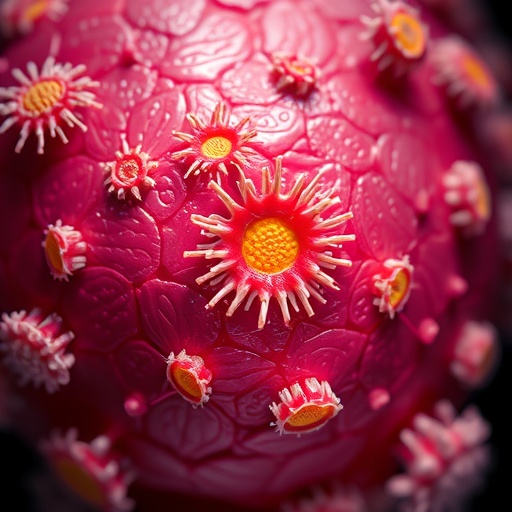
Credit: SIBET
In hospitals, doctors often advise patients to take calcium supplements. But does the calcium get into the cells that need it? Until recently, it’s been hard to tell.
But now, Prof. DONG Wenfei’s research group from the Suzhou Institute of Biomedical Engineering and Technology (SIBET) has developed a new type of fluorescent carbon dot that can effectively detect calcium levels in cells.
Calcium is essential to the life. Calcium ions regulate a variety of important cellular functions such as differentiation, proliferation, growth and gene transcription.
In addition, studies have reported that calcium status in cancer cells is associated with tumorigenesis, metastasis and angiogenesis. Other studies have also shown that abnormal changes in intracellular Ca2+ concentration are associated with the occurrence and development of Parkinson’s disease, Huntington’s disease and Alzheimer’s disease. Thus, detection of intracellular calcium levels is very important.
Conventional methods for calcium ion detection such as atomic absorption spectroscopy (AAS) and nuclear magnetic resonance (NMR) require expensive equipment and tedious sample preparation, limiting their applications in intracellular detection. Therefore, developing affordable, efficient, sensitive and simple techniques for detecting Ca2+ ions in cells is a priority. Fortunately, fluorescence detection meets these requirements.
As a new fluorescent probe, carbon dots (CDs) have been widely used in ion and small-molecule detection due to their extraordinary performance, which includes water solubility, excellent stability, nontoxicity, adjustable fluorescence and high quantum yield.
In this study, the researchers used an innovative approach to preparing functional CDs. They first synthesized the CDs from citric acid and ethylenediamine using a hydrothermal method. Then they modified the surface of the CDs with EGTA by reheating the solution.
This is a simple and convenient chemical preparation method, compared with the traditional cross-linking procedure, because all reactions are carried out in the same autoclave. The EGTA-modified CDs are the final product; no secondary purification and separation is required.
This work entitled “Two-Step Hydrothermal Preparation of Carbon Dots for Calcium Ion Detection” has been published on the ACS Applied Materials & Interface.
The CDs exhibit bright blue fluorescence. As calcium concentration increases, the fluorescence intensity drops sharply.
Cellular experiments show that CDs are nontoxic and have good biocompatibility, suggesting they may be a useful probe for intracellular Ca2+ detection.
In the future, researchers expect to develop fluorescent carbon dots in the near-infrared band with strong penetration. The distribution of calcium ions in internal organs could then be detected nondestructively.
###
Media Contact
XIAO Xintong
[email protected]
Original Source
http://english.
Related Journal Article
http://dx.




